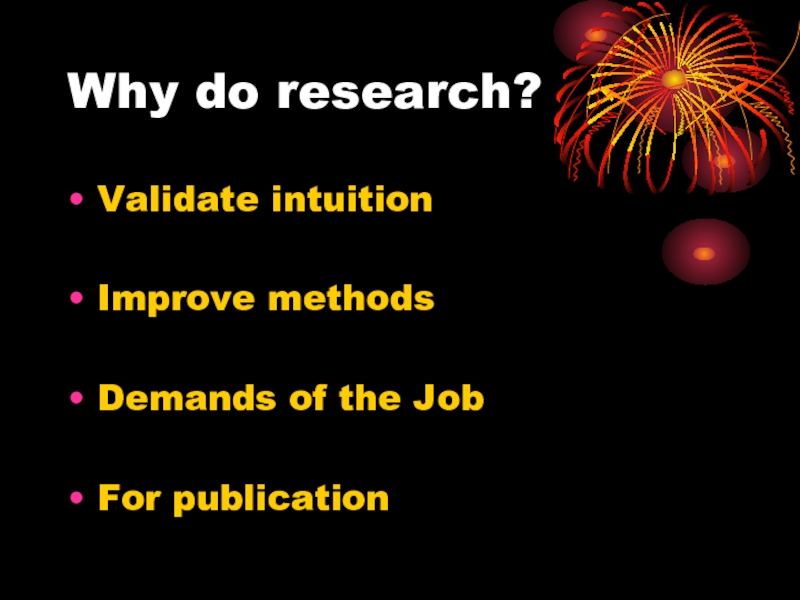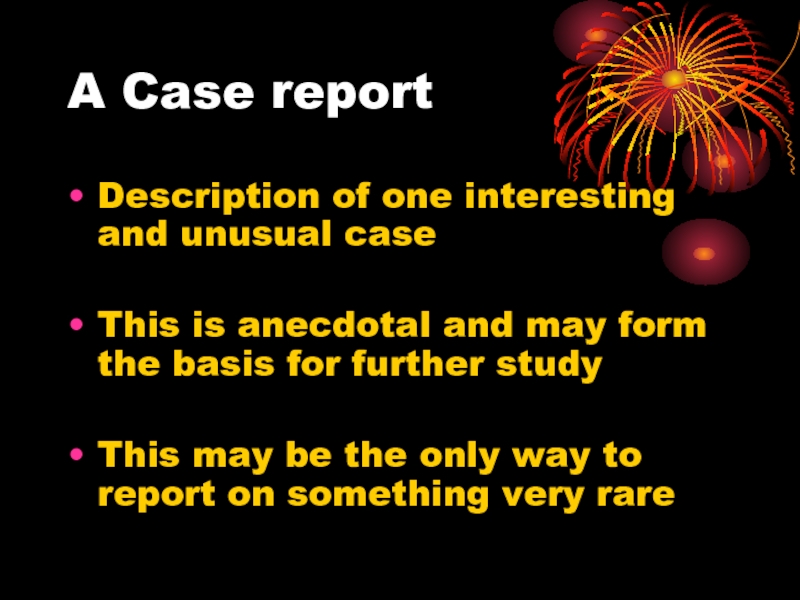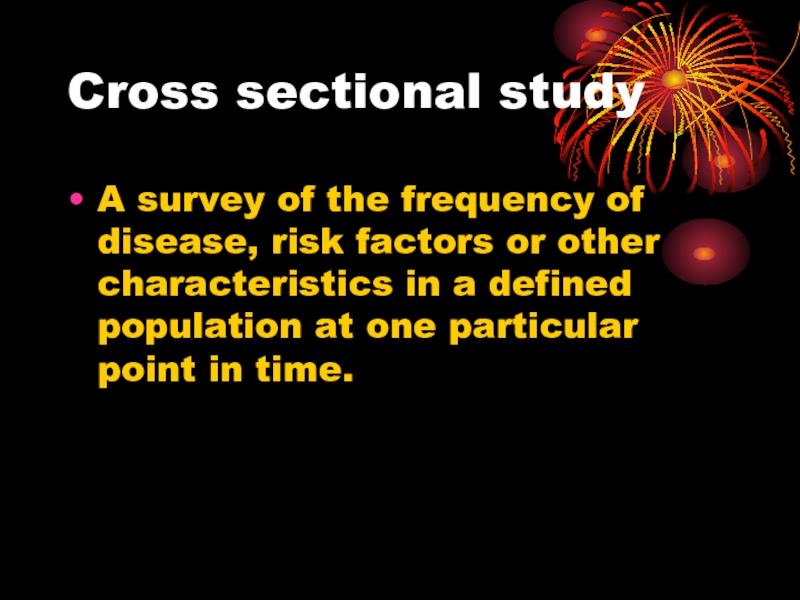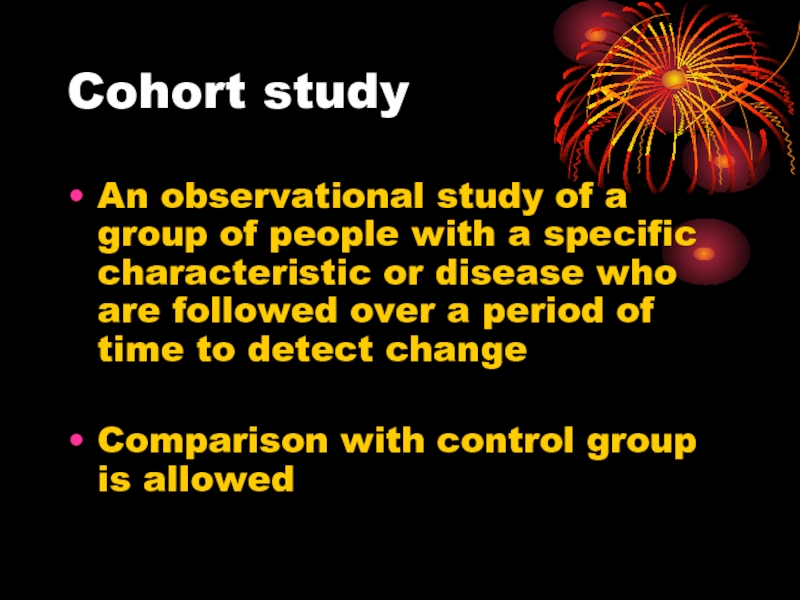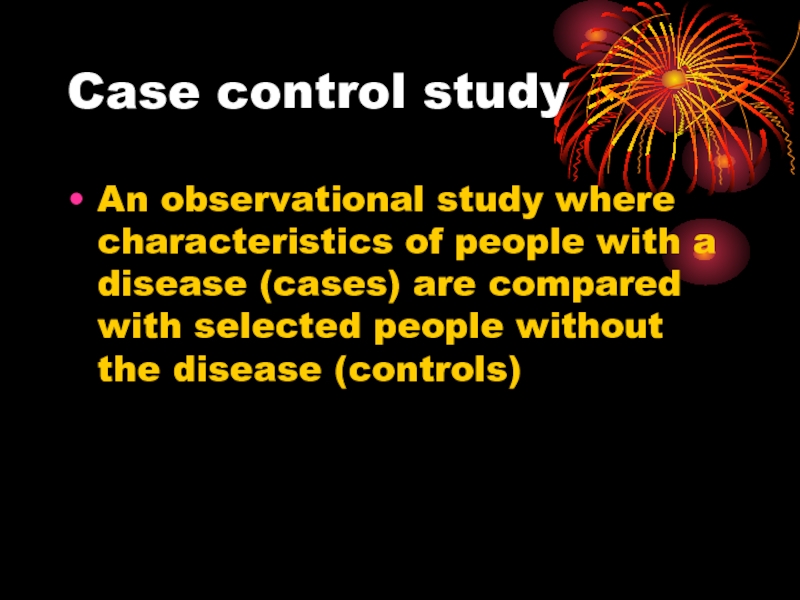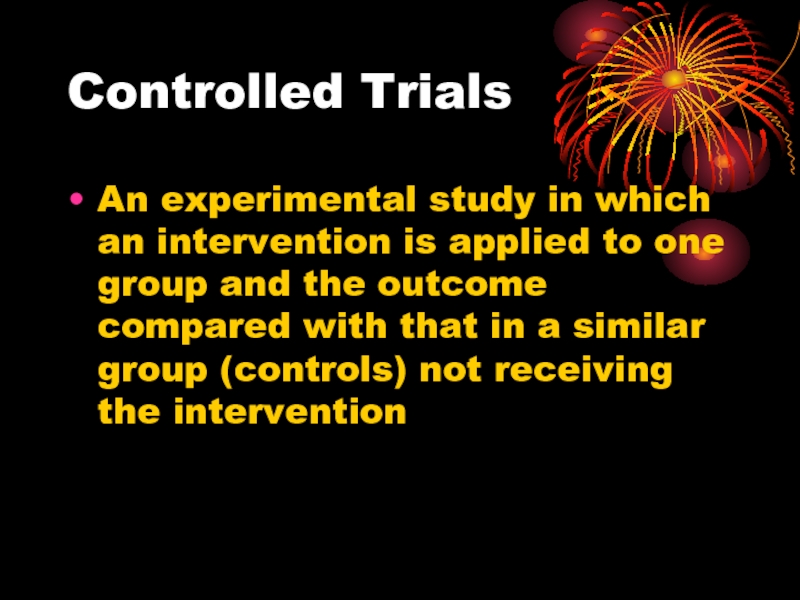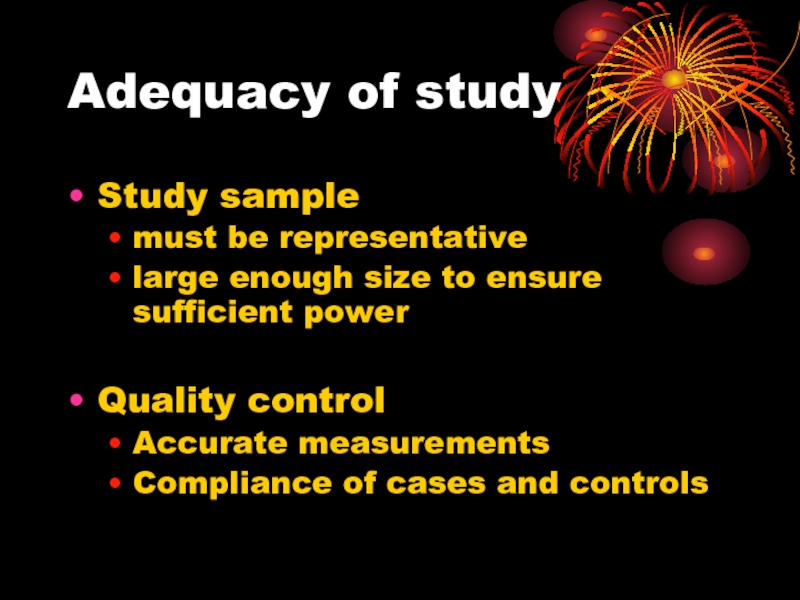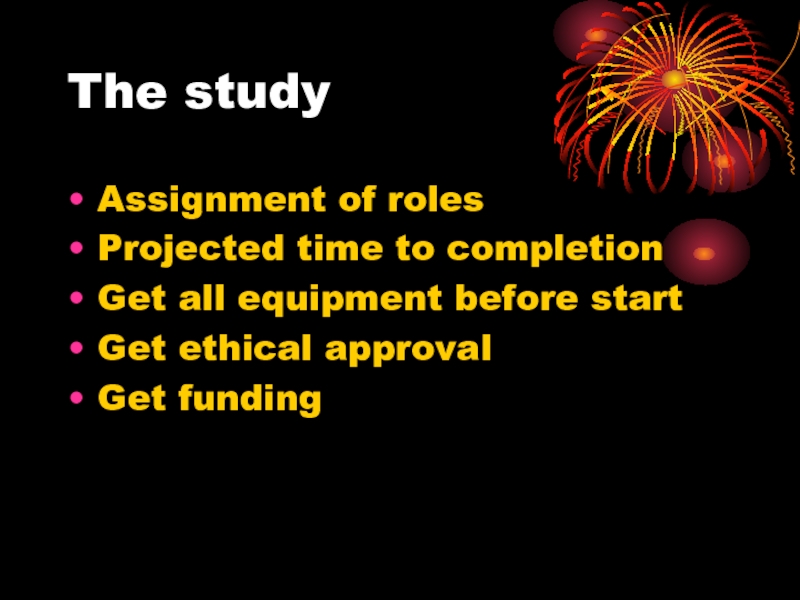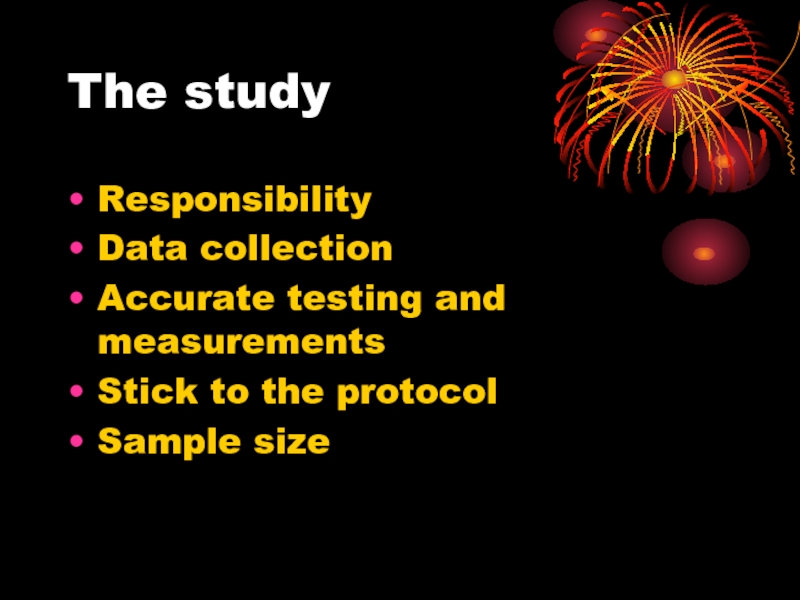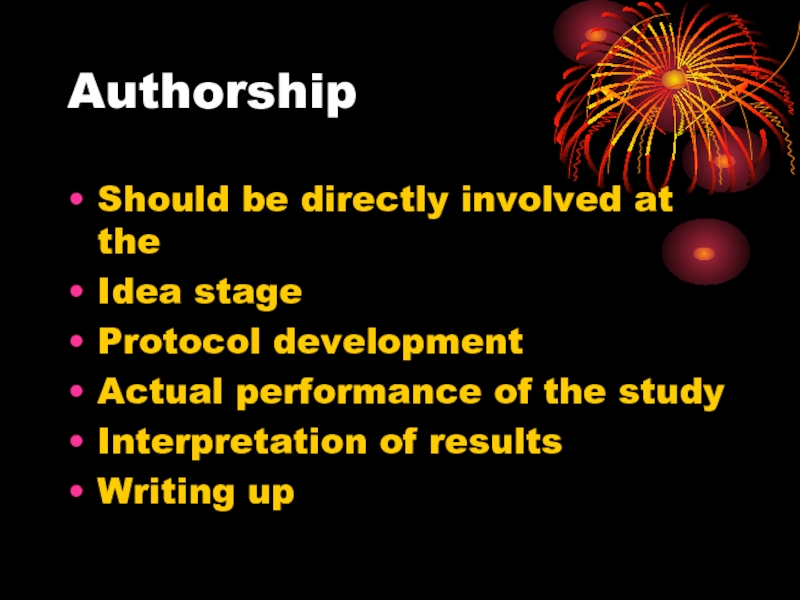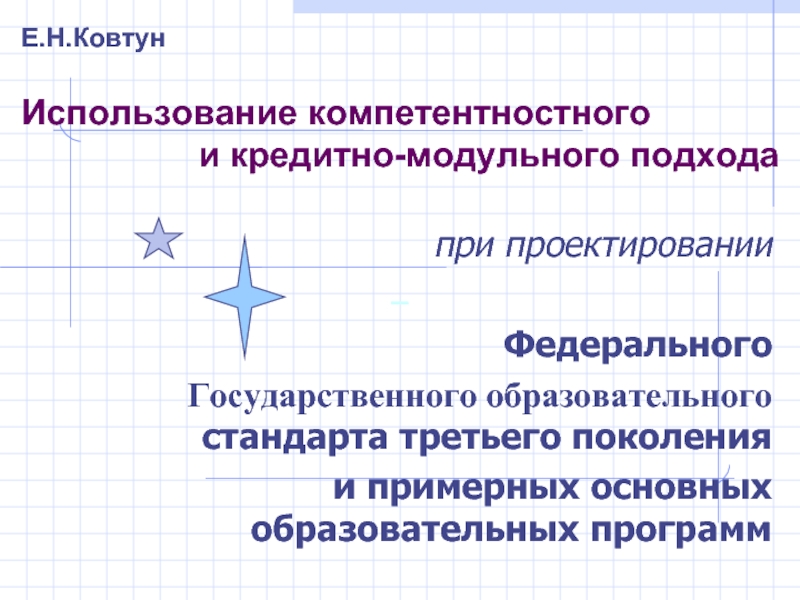and Gynaecology
- Главная
- Разное
- Дизайн
- Бизнес и предпринимательство
- Аналитика
- Образование
- Развлечения
- Красота и здоровье
- Финансы
- Государство
- Путешествия
- Спорт
- Недвижимость
- Армия
- Графика
- Культурология
- Еда и кулинария
- Лингвистика
- Английский язык
- Астрономия
- Алгебра
- Биология
- География
- Детские презентации
- Информатика
- История
- Литература
- Маркетинг
- Математика
- Медицина
- Менеджмент
- Музыка
- МХК
- Немецкий язык
- ОБЖ
- Обществознание
- Окружающий мир
- Педагогика
- Русский язык
- Технология
- Физика
- Философия
- Химия
- Шаблоны, картинки для презентаций
- Экология
- Экономика
- Юриспруденция
Introduction to research Methodology. Why do research презентация
Содержание
- 1. Introduction to research Methodology. Why do research
- 2. Why do research? Validate intuition Improve
- 3. Choose a subject Based on an idea
- 4. Choose a study design Case report Case
- 5. A Case report Description of one interesting
- 6. Case series Description of several cases in
- 7. Cross sectional study A survey of the
- 8. Cohort study An observational study of a
- 9. Case control study An observational study where
- 10. Controlled Trials An experimental study in which
- 12. Adequacy of design Best study is a
- 13. Adequacy of study Study sample must
- 14. Define Your objectives Try to keep these
- 15. Literature search Check to see if your
- 16. The protocol Write out introduction and methodology
- 17. Basics of the protocol This where you
- 18. The study Assignment of roles Projected time
- 19. The study Responsibility Data collection Accurate testing
- 20. Writing the paper Two reasons your papers
- 21. Writing up Your paper is reviewed by
- 22. Authorship Should be directly involved at the
- 23. Term delivery after intrauterine relocation of an
- 24. Authorship All authors must take full responsibility
Слайд 4Choose a study design
Case report
Case series
Case controlled study
Cross sectional
Cohort
Retrospective comparison
Prospective Comparison
Слайд 5A Case report
Description of one interesting and unusual case
This is anecdotal
and may form the basis for further study
This may be the only way to report on something very rare
This may be the only way to report on something very rare
Слайд 6Case series
Description of several cases in which no attempt is made
to answer specific hypotheses or compare results with another group of cases.
Слайд 7Cross sectional study
A survey of the frequency of disease, risk factors
or other characteristics in a defined population at one particular point in time.
Слайд 8Cohort study
An observational study of a group of people with a
specific characteristic or disease who are followed over a period of time to detect change
Comparison with control group is allowed
Comparison with control group is allowed
Слайд 9Case control study
An observational study where characteristics of people with a
disease (cases) are compared with selected people without the disease (controls)
Слайд 10Controlled Trials
An experimental study in which an intervention is applied to
one group and the outcome compared with that in a similar group (controls) not receiving the intervention
Слайд 12Adequacy of design
Best study is a randomised controlled double blind
Not possible
in all cases
May be unethical to treat or withhold treatment
May be unethical to treat or withhold treatment
Слайд 13Adequacy of study
Study sample
must be representative
large enough size to
ensure sufficient power
Quality control
Accurate measurements
Compliance of cases and controls
Quality control
Accurate measurements
Compliance of cases and controls
Слайд 14Define Your objectives
Try to keep these simple
The more variables the more
difficult
However use the opportunity
Get help at this stage
Senior colleagues
Experienced researchers
However use the opportunity
Get help at this stage
Senior colleagues
Experienced researchers
Слайд 15Literature search
Check to see if your idea is original
Look for a
new slant to present
Try to get the full article
Read all the references
Most of these will be vital when writing up
Try to get the full article
Read all the references
Most of these will be vital when writing up
Слайд 16The protocol
Write out introduction and methodology in detail
Give it to people
to read to check for major flaws
Get help at this stage
Get help at this stage
Слайд 17Basics of the protocol
This where you start writing the paper
Write intro,
methods in detail
Ethical considerations
Analytical methods in detail
Budget
Ethical considerations
Analytical methods in detail
Budget
Слайд 18The study
Assignment of roles
Projected time to completion
Get all equipment before start
Get
ethical approval
Get funding
Get funding
Слайд 19The study
Responsibility
Data collection
Accurate testing and measurements
Stick to the protocol
Sample size
Слайд 20Writing the paper
Two reasons your papers are rejected
Content
Format
Get a copy of
the Journal you wish to publish in similar article or detailed instructions
Слайд 21Writing up
Your paper is reviewed by experts
Get help before sending
it away
Reading a protocol or a paper or offering advice does not entitle one to become an author on a paper
Reading a protocol or a paper or offering advice does not entitle one to become an author on a paper
Слайд 22Authorship
Should be directly involved at the
Idea stage
Protocol development
Actual performance of
the study
Interpretation of results
Writing up
Interpretation of results
Writing up
Слайд 23Term delivery after intrauterine relocation of an ectopic pregnancy
Pearce, Mayonde and
Chamberlain. British Journal of Obstetrics and Gynaecology 1984 101:746
Слайд 24Authorship
All authors must take full responsibility for the study
That is why
it is important to be involved fully

